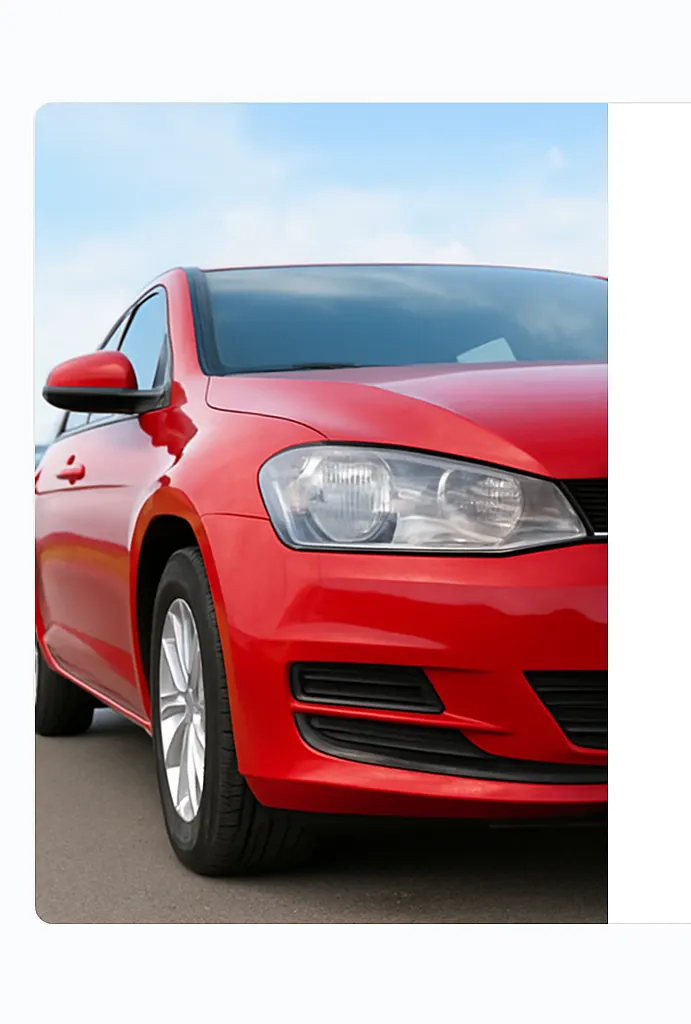The $2,000+ Mistake Most Drivers Make When Choosing Auto Insurance
Sarah thought she was being smart. When her auto insurance renewal came in the mail showing a $400 increase, she immediately started shopping around. She spent hours on comparison websites, got quotes from five different companies, and found coverage that looked identical to her current policy for $600 less per year.
She switched companies, feeling proud of the money she’d saved. Six months later, she rear-ended another car in stop-and-go traffic. What should have been a routine claim turned into a financial nightmare that cost her over $2,000 out of pocket—money she thought her “identical” coverage would have protected.
Sarah had fallen victim to the most expensive mistake drivers make when choosing auto insurance: focusing solely on price while ignoring coverage quality and claim handling reputation. This mistake costs the average driver $2,000-$3,500 over the lifetime of their policy, but it’s completely avoidable if you know what to look for.
Today, we’re going to expose this costly mistake and show you exactly how to choose auto insurance that provides real protection without overpaying. By the end of this article, you’ll understand why the cheapest policy is often the most expensive in the long run, and how to find the sweet spot between affordable premiums and quality coverage.
The $2,000 Mistake: Choosing Based on Price Alone
The biggest mistake drivers make when selecting auto insurance isn’t choosing too little coverage or picking the wrong company—it’s making their decision based exclusively on quoted premium prices without considering the total cost of ownership.
Here’s how this mistake typically costs drivers money:
Claim Denial or Disputes: Cheap insurance companies often have stricter claim guidelines and are more likely to dispute or deny legitimate claims, leaving you to pay out of pocket.
Poor Claims Processing: Budget insurers frequently have understaffed claims departments, leading to delayed payments, extended rental car periods, and additional expenses during the claims process.
Hidden Coverage Gaps: Low-cost policies often exclude coverage that standard policies include, resulting in surprise expenses when you need to file a claim.
Inadequate Settlement Amounts: Some insurers are known for offering low settlement amounts, forcing you to either accept less than fair compensation or hire an attorney.
Premium Increases After Claims: While all insurers may raise rates after claims, some companies impose much steeper increases than others.
The irony is that drivers who think they’re saving money by choosing the cheapest option often end up paying significantly more when they actually need their insurance to work.
The Real Cost of “Cheap” Insurance: A Breakdown
Let’s examine the hidden costs that make cheap insurance expensive:
Average Out-of-Pocket Costs by Insurance Tier
Premium Tier Insurance Companies:
- Average annual premium: $1,800
- Average out-of-pocket costs per claim: $250
- Claim approval rate: 94%
- Average settlement time: 18 days
Budget Tier Insurance Companies:
- Average annual premium: $1,200
- Average out-of-pocket costs per claim: $850
- Claim approval rate: 78%
- Average settlement time: 45 days
The math is stark: While budget insurance saves you $600 per year in premiums, a single claim can cost you an additional $600 out of pocket, completely eliminating any savings. Over a typical 6-year period with one claim, choosing budget insurance actually costs most drivers $1,800-$3,600 more than choosing a quality insurer.
The Psychology Behind the Price-Only Decision
Understanding why drivers make this mistake is key to avoiding it:
Immediate vs. Long-Term Thinking
Auto insurance shopping typically happens under pressure—your current policy is expiring, rates just increased, or you need coverage for a new car immediately. This time pressure encourages short-term thinking, where the immediate premium savings seem more important than long-term protection quality.
The Invisibility of Insurance Value
Unlike buying a car or choosing a restaurant, you can’t easily evaluate insurance quality before you need it. The true value of your policy only becomes apparent when you file a claim, making it easy to underestimate the importance of coverage quality.
Marketing Manipulation
Insurance companies spend billions on advertising that focuses exclusively on low prices and savings amounts. This constant messaging trains consumers to believe that price is the only factor that matters.
Complexity Avoidance
Insurance policies are complex, and comparing coverage details requires time and expertise that most people don’t have. It’s much easier to compare price quotes than to analyze policy language and coverage differences.
Red Flags: How to Spot Cheap Insurance That Will Cost You
Not all low-priced insurance is bad insurance, but certain warning signs indicate that a company’s low prices come at the expense of coverage quality:
Red Flag #1: Quotes That Are Dramatically Lower Than Others
If one company’s quote is 40% or more below comparable quotes from other insurers, investigate carefully. Dramatic price differences usually indicate:
- Significant coverage gaps or exclusions
- Higher deductibles than other policies
- Lower liability limits that may not adequately protect you
- A company with poor claims-paying practices
Red Flag #2: Pressure to Buy Immediately
Legitimate insurance companies don’t need to pressure you into immediate decisions. Be wary of companies that:
- Claim their rates are only available “today”
- Use high-pressure sales tactics
- Don’t give you time to review policy documents
- Discourage you from shopping around
Red Flag #3: Unusually Low Liability Limits
Some companies offer attractively low prices by defaulting to your state’s minimum liability requirements. These limits are often inadequate for modern accident costs:
- Minimum liability limits were set years ago and haven’t kept pace with medical costs
- A serious accident can easily exceed minimum limits, leaving you personally liable
- Higher liability limits usually cost very little extra but provide significantly more protection
Red Flag #4: Poor Customer Service During Sales
How a company treats you as a potential customer often indicates how they’ll treat you as a claim. Warning signs include:
- Difficulty reaching representatives
- Sales staff who can’t answer basic coverage questions
- Unwillingness to explain policy details
- Multiple attempts needed to get consistent information
Red Flag #5: Lack of Local Claims Service
Companies that handle all claims through distant call centers often provide poor service. Look for insurers that offer:
- Local claims representatives
- Drive-in claims centers
- 24/7 claims reporting
- Mobile claims apps with good ratings
The Hidden Costs of Poor Insurance Choices
Beyond the immediate costs of claim disputes and delays, choosing poor-quality insurance can have long-lasting financial impacts:
Increased Future Premiums
When your cheap insurer provides poor claims service or disputes legitimate claims, you might need to switch companies. New insurers often charge higher rates for customers coming from companies with poor reputations, viewing them as higher risk.
Legal Expenses
If your insurer denies a legitimate claim or offers an inadequate settlement, you might need to hire an attorney. Legal fees can easily exceed any premium savings from choosing cheap insurance.
Credit Score Impact
Delayed claim payments can force you to use credit cards or loans to cover immediate expenses. If your insurer takes months to process a claim, the interest charges and potential credit utilization impact can be significant.
Lost Time Value
Poor claims service means spending hours on phone calls, dealing with adjusters, and managing claim disputes instead of focusing on work and family. The opportunity cost of this time can be substantial.
Rental Car Overages
Budget insurers often provide minimal rental car coverage or have complicated approval processes. You might end up paying hundreds in rental car costs that better coverage would have eliminated.
The Smart Way to Choose Auto Insurance: Beyond Price
Here’s a systematic approach to choosing insurance that provides real value:
Step 1: Determine Your Coverage Needs
Before comparing prices, understand what coverage levels you actually need:
Liability Coverage: Calculate your net worth and add 20-30% as a buffer. This should be your minimum liability coverage amount. Consider that average accident settlement costs have increased 30% in the past five years.
Comprehensive and Collision: If your car is worth more than $4,000 or you’re still making payments, you need both coverages. Choose deductibles you can comfortably afford in an emergency.
Uninsured Motorist Coverage: With one in eight drivers being uninsured, this coverage is essential. Choose limits equal to your liability coverage.
Medical Payments/PIP: Even with health insurance, this coverage can be valuable for immediate medical expenses and lost wages.
Step 2: Research Company Reputation
Before requesting quotes, research each company’s reputation:
Financial Strength: Check AM Best ratings to ensure the company can pay claims. Look for companies rated A- or higher.
Claims Satisfaction: Review J.D. Power claims satisfaction ratings and consumer reports for each company you’re considering.
Complaint Ratios: Check your state insurance commissioner’s website for complaint ratios. Companies with high complaint ratios often have poor claims service.
BBB Ratings: While not perfect, Better Business Bureau ratings can provide insight into customer service quality.
Step 3: Compare Total Value, Not Just Price
When evaluating quotes, consider:
Coverage Comparison: Ensure all quotes include identical coverage limits and deductibles. Small differences in coverage can create large differences in price.
Discount Availability: Some companies offer discounts you don’t currently qualify for but might in the future (good student, homeowner, etc.).
Claims Service Quality: Factor in the value of good claims service. A company that settles claims quickly and fairly can save you hundreds in rental cars, missed work, and stress.
Additional Benefits: Some insurers include services like roadside assistance, accident forgiveness, or gap coverage at no extra charge.
Step 4: Test Customer Service
Before buying, test each company’s customer service:
Call with Questions: Phone each company with coverage questions and evaluate their responsiveness and knowledge.
Online Resources: Check their website and mobile app functionality. You’ll likely need to use these tools if you become a customer.
Local Representation: If you prefer working with local agents, verify that your chosen company has quality representation in your area.
READ ALSO: Why Your Auto Insurance Just Went Up (And How to Fight Back)
The True Cost Comparison: Premium vs. Total Cost
Here’s a real-world example of how to compare insurance options:
Option A: Budget Insurer
- Annual Premium: $1,200
- Estimated claim out-of-pocket costs: $600
- Estimated rental car overages: $150
- Estimated time value for claim disputes: $200
- Total Annual Cost: $2,150
Option B: Quality Insurer
- Annual Premium: $1,650
- Estimated claim out-of-pocket costs: $200
- Estimated rental car overages: $0
- Estimated time value for claim disputes: $50
- Total Annual Cost: $1,900
In this example, the “expensive” insurance actually costs $250 less per year when you factor in the total cost of ownership.
Industry Secrets: What Insurance Companies Don’t Want You to Know
Secret #1: Loss Ratios Tell the Real Story
Insurance companies must report their “loss ratios”—the percentage of premium dollars they pay out in claims. Companies with very low loss ratios (under 60%) may be denying legitimate claims or providing poor settlements.
Secret #2: Some Companies Target Different Customer Types
Some insurers specifically target price-sensitive customers with low-quality coverage, knowing these customers are less likely to shop around after experiencing poor claims service.
Secret #3: Claims Handling Varies Dramatically by Company
The same accident with identical coverage can result in vastly different out-of-pocket costs depending on your insurer’s claims practices.
Secret #4: Rate Increases After Claims Aren’t Standard
While most companies increase rates after claims, the amount varies significantly. Some companies impose minimal increases for first accidents, while others implement large surcharges.
Warning Signs You’ve Made the $2,000 Mistake
If you’ve already chosen insurance based primarily on price, watch for these warning signs that you may have made the costly mistake:
During the Claims Process:
- Your adjuster is difficult to reach or frequently changes
- Initial settlement offers seem unreasonably low
- The company disputes obvious liability or coverage
- Claims processing takes much longer than promised
- You’re required to use specific repair shops with poor reputations
In General Customer Service:
- Long hold times when calling customer service
- Frequent billing errors or payment processing problems
- Difficulty making policy changes or getting questions answered
- Lack of online account management tools
Premium and Coverage Issues:
- Large rate increases without claims or violations
- Sudden changes in coverage or policy terms
- New fees appearing without adequate explanation
How to Fix the Mistake If You’ve Already Made It
If you recognize that you’ve chosen insurance based primarily on price and are experiencing problems, here’s how to fix the situation:
Immediate Steps
- Document Everything: Keep detailed records of all interactions with your current insurer, especially claim-related communications.
- Know Your Rights: Understand your state’s insurance laws and your policy’s specific terms and conditions.
- Get a Second Opinion: If you’re dealing with a disputed claim, consider hiring a public adjuster or attorney for complex cases.
Planning Your Exit Strategy
- Research Better Options: Use the systematic approach outlined earlier to identify quality insurers that offer better value.
- Time Your Switch: If possible, wait until your current policy term ends to avoid cancellation fees. However, don’t hesitate to switch mid-term if you’re dealing with serious service problems.
- Maintain Continuous Coverage: Ensure no gap in coverage when switching, as this can result in higher future rates.
The Sweet Spot: Quality Coverage at Fair Prices
The goal isn’t to buy the most expensive insurance available—it’s to find the best value. Here’s how to identify companies that offer quality coverage at reasonable prices:
Look for Mid-Tier Regional Companies
Many regional insurers offer excellent claims service and competitive rates. They often provide better customer service than national budget companies while charging less than premium national brands.
Consider Mutual Insurance Companies
Mutual insurers are owned by policyholders rather than shareholders, often resulting in better claims service and more stable rates.
Evaluate Insurance Groups
Some insurance groups offer different brands for different market segments. The premium brand might offer better service than the budget brand from the same company.
Factor in Long-Term Relationships
Companies often provide better service and more competitive rates to long-term customers. Consider the total relationship value, not just the first-year premium.
Questions to Ask Before Choosing Any Insurance Company
Use these questions to evaluate any insurer you’re considering:
- “What is your average claim settlement time for my type of coverage?”
- “Can you provide references from recent claim customers?”
- “What percentage of claims do you deny or dispute?”
- “Do you have local claims representatives, or is everything handled by phone?”
- “What is your AM Best rating and loss ratio?”
- “How much do rates typically increase after a first claim?”
- “What additional services are included with my policy?”
- “Can you explain exactly what would happen if I had a claim tomorrow?”
Technology and Tools to Help Make Better Decisions
Several resources can help you avoid the $2,000 mistake:
Insurance Company Research:
- State insurance commissioner websites for complaint data
- AM Best website for financial strength ratings
- J.D. Power for customer satisfaction surveys
- NAIC Consumer Information Source for company comparisons
Coverage Analysis Tools:
- Online coverage calculators to determine appropriate limits
- Policy comparison spreadsheets to ensure apples-to-apples comparisons
- Mobile apps from potential insurers to test their technology
Review and Rating Sites:
- Consumer Reports insurance ratings
- Better Business Bureau profiles
- Online review sites (with appropriate skepticism about very positive or negative outliers)
READ ALSO: 7 Hidden Fees Your Auto Insurance Company Hopes You’ll Never Notice
The Future of Insurance Shopping: Trends to Watch
The insurance industry is evolving, and these trends may affect how you should approach insurance shopping:
Usage-Based Insurance: More companies are offering rates based on actual driving behavior, which could benefit safe drivers.
Digital-First Insurers: New companies focusing on digital experiences may offer good value, but evaluate their claims-paying ability carefully.
Artificial Intelligence in Claims: AI is improving claims processing speed and accuracy at quality companies while potentially making disputes more common at budget insurers.
Transparency Initiatives: Some states are requiring more disclosure of claims practices and settlement ratios, making it easier to identify quality insurers.
Building Your Insurance Decision Framework
Create a systematic approach to avoid the $2,000 mistake:
Your Insurance Decision Scorecard
For each company you consider, rate them on a scale of 1-5 in these categories:
- Premium competitiveness (1 = very expensive, 5 = very affordable)
- Financial strength (1 = poor ratings, 5 = excellent ratings)
- Claims reputation (1 = many complaints, 5 = excellent reviews)
- Customer service (1 = poor service, 5 = excellent service)
- Coverage options (1 = limited options, 5 = comprehensive options)
Companies scoring 20+ points total merit serious consideration. Never choose a company scoring below 15 total points, regardless of price.
Your Personal Insurance Priorities
Rank these factors in order of importance to you:
- Lowest possible premium
- Best claims service
- Local representation
- Financial stability
- Coverage flexibility
- Additional services/benefits
Use this ranking to weight your decision when comparing options.
Taking Action: Your Next Steps
Now that you understand the $2,000 mistake and how to avoid it, here’s your action plan:
This Week:
- Evaluate your current insurance using the warning signs provided
- Research the reputation of your current insurer
- Calculate the total cost of ownership for your current policy
This Month:
- Get quotes from 3-5 quality insurers using proper comparison techniques
- Test customer service at each company you’re considering
- Calculate total value, not just premium costs, for each option
Ongoing:
- Review your insurance annually, but don’t switch based solely on price
- Monitor your insurer’s service quality and financial strength
- Stay informed about changes in your state’s insurance regulations
The Bottom Line: True Value in Auto Insurance
The $2,000 mistake of choosing auto insurance based solely on price is easily avoidable, but it requires changing how you think about insurance shopping. Instead of asking “What’s the cheapest option?” ask “What provides the best value?”
Remember that auto insurance isn’t a commodity—all policies are not created equal. The differences in coverage quality, claims service, and company reliability can have profound financial impacts that far exceed any premium savings from choosing the cheapest option.
The goal is to find insurance that provides comprehensive protection at a fair price, backed by a company that will be there when you need them most. This balance between cost and quality is where smart insurance shopping happens.
Your auto insurance policy might be the most important financial product you never think about—until you need it. Make sure that when that moment comes, your insurance will actually protect you rather than leave you facing thousands of dollars in unexpected expenses.
Don’t let the insurance industry’s focus on low prices fool you into making the $2,000 mistake. By focusing on total value rather than just premium cost, you can find insurance that truly protects your financial well-being while still getting a fair deal on your premiums.
The few extra dollars you spend on quality coverage today could save you thousands when you need your insurance to work. That’s not an expense—that’s one of the smartest investments you can make.





